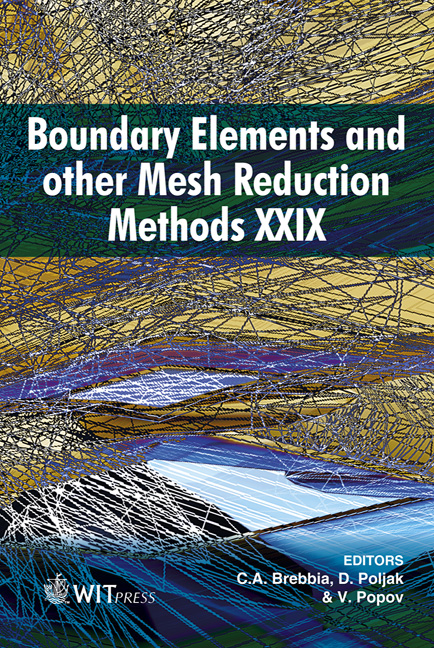Electromagnetic Modeling Of A Lightning Rod
Price
Free (open access)
Transaction
Volume
44
Pages
12
Published
2007
Size
493 kb
Paper DOI
10.2495/BE070271
Copyright
WIT Press
Author(s)
D. Poljak, M. Birkic, D. Kosor, C. A. Brebbia & V. Murko
Abstract
This paper deals with a frequency domain analysis of a lightning rod using the antenna theory model. The lightning rod struck by lightning is represented by a straight thin wire antenna excited by an equivalent current source. The current induced along a lightning rod due to a direct lightning strike is determined by solving the homogeneous integro-differential equation of the Pocklington type. Once obtaining the current distribution along the rod provides the calculation of the charge induced along the rod and related irradiated electric field. The corresponding Pocklington equation and field integral relationships are handled via the Galerkin-Bubnov scheme of the Indirect Boundary Element Method (GBIBEM). 1 Introduction Lightning flash surges are common sources of electromagnetic interferences (EMI) induced on electrical and electronic systems and equipment, thus producing many undesired effects, or even malfunction of systems and equipment [1–3]. The purpose of a lightning protection system (LPS) in terms of lightning rod is to capture a direct lightning strike. The main parameter of LPS is its efficiency which measure is related to the probability of direct strike to LPS instead of strike to the object within the protected volume defined by the protection zone. The protection zone is considered to be substantially immune to lightning strike due to the air terminal, i.e. the lightning rod. The protection zone around the rod can be assessed by applying the full wave analysis [2]. In particular, the protection zone can be determined if the electric field in the vicinity of the rod is known [4, 5].
Keywords





